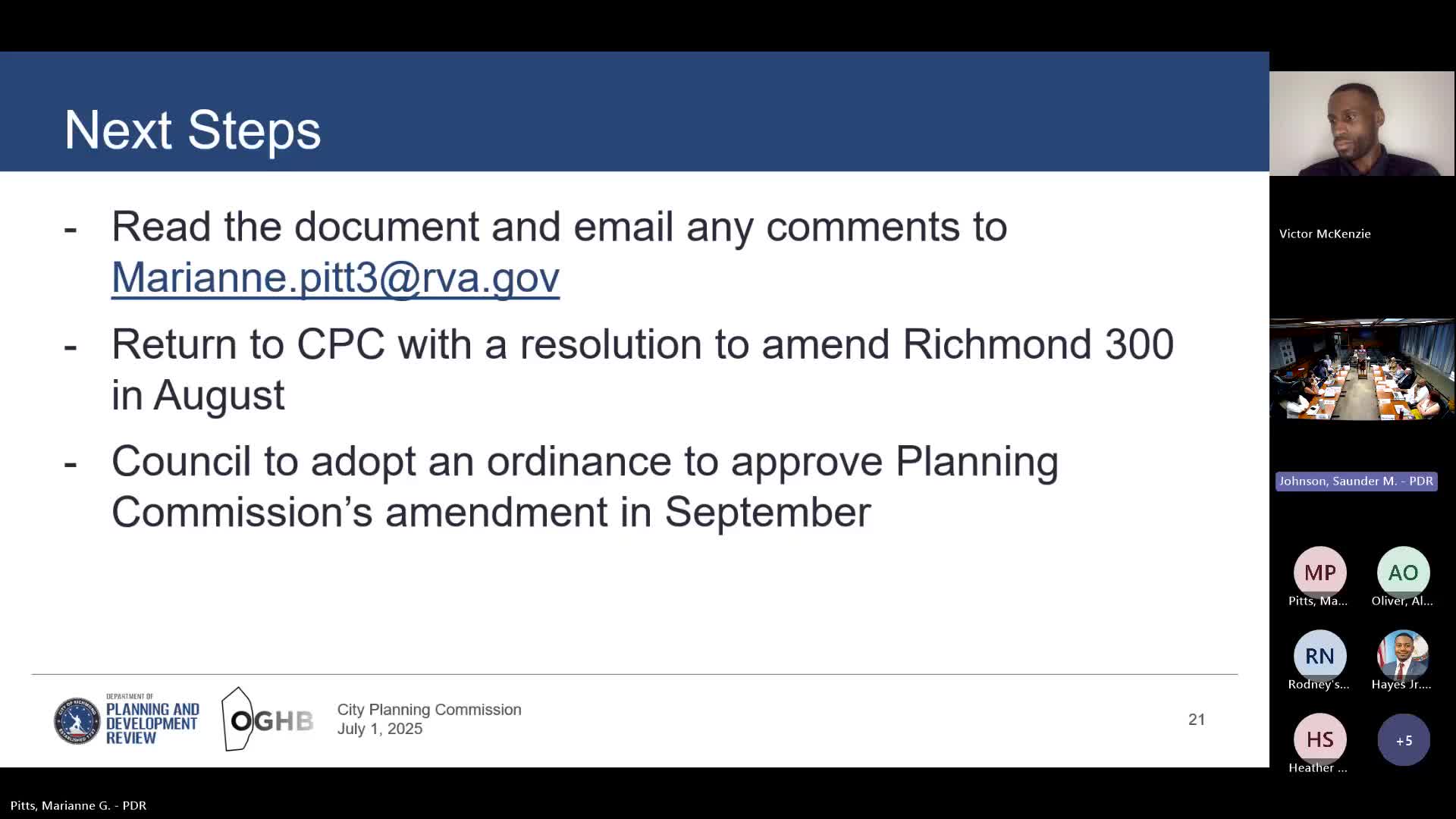City Council reviews Oak Grove zoning plan and impact on gentrification metrics
July 01, 2025 | Richmond City (Independent City), Virginia
This article was created by AI summarizing key points discussed. AI makes mistakes, so for full details and context, please refer to the video of the full meeting. Please report any errors so we can fix them. Report an error »

As the sun dipped below the horizon, casting a warm glow over Richmond City Hall, the Planning Commission convened to address pressing concerns about the future of the Oak Grove neighborhood. The atmosphere was charged with urgency as commissioners and community members alike grappled with the challenges of growth, infrastructure, and the risk of displacement.
At the heart of the discussion was the alarming rise in housing prices, with the median single-family home assessment skyrocketing from $58,000 in 2019 to $133,000 in 2023. This dramatic increase has raised concerns about the potential displacement of long-time residents, particularly seniors and low-income families. “We need to understand how we can grow without displacing our community,” one commissioner emphasized, highlighting the delicate balance between development and preservation.
The meeting also touched on the inadequacies of existing infrastructure, particularly in terms of drainage and sidewalks. Residents have reported standing water that lingers for days, making it difficult for families to navigate their own neighborhoods. “We have to look at these hard issues, not just housing but also the basic needs of our community,” another commissioner noted, stressing the importance of addressing these infrastructural challenges alongside housing development.
A significant point of discussion was the need for metrics to measure the impact of proposed zoning changes and developments. Commissioners expressed a desire for data that could illuminate the relationship between new developments and community displacement. “We need to ensure that our decisions are not exacerbating the displacement risk,” one member stated, advocating for a more data-driven approach to planning.
The conversation also explored the broader implications of gentrification, particularly its historical context in neighborhoods predominantly inhabited by African American families. “We must be creative in our approach to growth,” a commissioner urged, calling for innovative solutions that would protect vulnerable populations while still allowing for necessary development.
As the meeting drew to a close, the commissioners left with a renewed commitment to not only address the immediate needs of Oak Grove but also to consider the long-term implications of their planning decisions. The challenge ahead is clear: to foster a thriving community that honors its roots while embracing the future. The stakes are high, and the path forward will require careful navigation to ensure that progress does not come at the cost of displacing those who have called Oak Grove home for generations.
At the heart of the discussion was the alarming rise in housing prices, with the median single-family home assessment skyrocketing from $58,000 in 2019 to $133,000 in 2023. This dramatic increase has raised concerns about the potential displacement of long-time residents, particularly seniors and low-income families. “We need to understand how we can grow without displacing our community,” one commissioner emphasized, highlighting the delicate balance between development and preservation.
The meeting also touched on the inadequacies of existing infrastructure, particularly in terms of drainage and sidewalks. Residents have reported standing water that lingers for days, making it difficult for families to navigate their own neighborhoods. “We have to look at these hard issues, not just housing but also the basic needs of our community,” another commissioner noted, stressing the importance of addressing these infrastructural challenges alongside housing development.
A significant point of discussion was the need for metrics to measure the impact of proposed zoning changes and developments. Commissioners expressed a desire for data that could illuminate the relationship between new developments and community displacement. “We need to ensure that our decisions are not exacerbating the displacement risk,” one member stated, advocating for a more data-driven approach to planning.
The conversation also explored the broader implications of gentrification, particularly its historical context in neighborhoods predominantly inhabited by African American families. “We must be creative in our approach to growth,” a commissioner urged, calling for innovative solutions that would protect vulnerable populations while still allowing for necessary development.
As the meeting drew to a close, the commissioners left with a renewed commitment to not only address the immediate needs of Oak Grove but also to consider the long-term implications of their planning decisions. The challenge ahead is clear: to foster a thriving community that honors its roots while embracing the future. The stakes are high, and the path forward will require careful navigation to ensure that progress does not come at the cost of displacing those who have called Oak Grove home for generations.
View full meeting
This article is based on a recent meeting—watch the full video and explore the complete transcript for deeper insights into the discussion.
View full meeting
